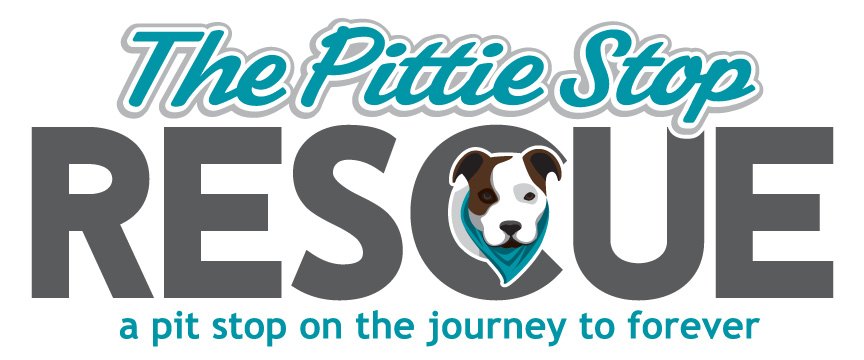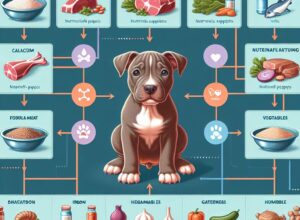
Key Takeaways
-
Omega-3 fatty acids are crucial for a pitbull puppy’s brain development, immune system, skin health, and joint mobility.
-
Natural sources of Omega-3 include fish like salmon and plant-based options such as flaxseed.
-
It’s essential to maintain the right balance between Omega-3 and Omega-6 fatty acids in your pitbull puppy’s diet.
-
When choosing fish oil supplements, ensure they are high-quality and designed specifically for dogs.
-
Consulting a vet is key when determining the appropriate amount of Omega-3 for your puppy’s individual needs.
Top Omega-3 Sources for Your Growing Pitbull
Omega-3 Sources for Your Growing Pitbull
Natural Foods Rich in Omega-3
Fish, especially fatty ones like salmon, mackerel, and sardines, are excellent sources. Including these in your pitbull puppy’s diet not only supports their brain health but also keeps their coat shiny and skin healthy. If you’re looking for plant-based options, flaxseeds or flaxseed oil are great alternatives. You can easily mix these into your pup’s food.
Fish Oil Supplements: Are They Safe?
Supplements can be a convenient way to boost your pitbull puppy’s intake of Omega-3. But not all supplements are created equal. It’s crucial to choose a high-quality fish oil that’s specifically formulated for dogs. This ensures the right concentration and purity, reducing the risk of contaminants that can be found in some human-grade fish oils.
Understanding the Omega-3 to Omega-6 Balance
While Omega-3s are essential, they need to be balanced with Omega-6 fatty acids. Too much Omega-6 can lead to inflammation, so it’s important to find the right ratio. Most quality dog foods are formulated to provide this balance, but always check the label or consult with your vet to make sure your pitbull puppy’s diet is on track.
Now that you know where to find Omega-3s and the importance of a balanced diet, let’s move on to how you can incorporate these into your puppy’s daily meals.

Tailoring Your Pitbull Puppy’s Diet with Omega-3
Just like humans, puppies need a balanced diet, and that includes the right types of fat. Omega-3 fatty acids are a key component in your pitbull puppy’s diet, helping them grow up strong and healthy. Let’s talk about how you can make sure your puppy is getting enough of this important nutrient.
How to Integrate Omega-3 Into Your Puppy’s Meals
Integrating Omega-3 into your pitbull puppy’s diet is easier than you might think. Start by choosing a high-quality dog food that lists Omega-3 sources, like fish oil, on the ingredient label. You can also add a spoonful of ground flaxseed or a small portion of cooked salmon to their meals. Remember, variety is the spice of life, even for your pup, so rotate these sources to keep meals interesting and nutritionally balanced.
Myths vs. Facts: Omega-3 in Puppy Diets
There are many myths out there about Omega-3 in dog diets. Some people think that puppies don’t need these fats, or that they can get all they need from any type of fish. The truth is, Omega-3 fatty acids are crucial for a puppy’s development, and they need to come from high-quality sources. Not all fish are equal in Omega-3 content, so opt for fatty fish like salmon or sardines, or use supplements designed for dogs.
Upgrading Your Pitbull’s Diet Gradually
If you’re introducing new sources of Omega-3 into your puppy’s diet, it’s important to do it gradually. Sudden changes in diet can cause digestive upset. Start by mixing a small amount of the new food with their current food and slowly increase the proportion over the course of a week. This gives your puppy’s digestive system time to adjust.
Real Benefits of Omega-3 in a Pitbull Puppy’s Diet
Omega-3 fatty acids aren’t just another trend in pet nutrition; they’re a fundamental part of your pitbull puppy’s growth and health. These fats play a crucial role in everything from brain development to maintaining a healthy coat. But what exactly are the benefits that make Omega-3 so important?
Firstly, Omega-3s are essential components of cell membranes throughout the body and affect the cell receptors in these membranes. They provide the starting point for making hormones that regulate blood clotting, contraction and relaxation of artery walls, and inflammation. Moreover, they bind to receptors in cells that regulate genetic function. Likely due to these effects, they have been shown to help prevent heart disease and stroke, may help control lupus, eczema, and rheumatoid arthritis, and may play protective roles in cancer and other conditions.
Brainy Pups: Omega-3 and Cognitive Development
Omega-3 fatty acids are vital for the cognitive development of pitbull puppies. DHA, a type of Omega-3, is a major building block of the brain. Feeding your puppy a diet rich in DHA can help support their memory, learning, and brain development. This means a smarter, more trainable puppy, which is a win for both of you!
The Immunity Boost: How Omega-3 Helps
Omega-3s also play a big role in your pitbull puppy’s immune system. They can help regulate the immune response and are known to have anti-inflammatory properties. This can be particularly beneficial for pitbulls, which are prone to certain allergies and skin conditions. A diet rich in Omega-3 can help keep your puppy’s immune system strong, fighting off illness and keeping them healthy.
For a Lustrous Coat and Healthy Skin
One of the most noticeable benefits of Omega-3 for your pitbull puppy is a shiny coat and healthy skin. These fatty acids help to nourish the skin and reduce dryness and itchiness that can lead to scratching and irritation. This means your puppy will not only look better but feel better too.
Supporting Joints and Reducing Inflammation
Pitbulls are active dogs, and maintaining joint health is crucial. Omega-3 fatty acids can help support joint health and reduce the inflammation that can lead to arthritis later in life. By starting your puppy on a diet rich in Omega-3s, you’re helping to lay the foundation for a lifetime of mobility and play.
Why Omega-3 is a Game Changer for Your Pitbull Puppy’s Diet
Omega-3 fatty acids are more than just a healthy addition to your pitbull puppy’s diet; they’re a game changer. They have a profound effect on your puppy’s health, from the inside out. By ensuring your puppy gets enough Omega-3, you’re not just feeding them; you’re nurturing their development into a healthy, vibrant adult dog.
Most importantly, Omega-3s aren’t just beneficial; they’re essential. Your puppy can’t produce these fatty acids on their own, so it’s up to you to provide them. This is why choosing the right food and supplements is so critical. It’s not just about filling their belly; it’s about giving them the building blocks they need to grow and thrive.
Omega-3 Fatty Acids and Their Role
Omega-3 fatty acids, particularly EPA and DHA, are crucial for your pitbull puppy’s health. They support not just physical development like brain function and joint health, but also emotional well-being, helping to keep your puppy calm and focused. With the right Omega-3 intake, you’re setting the stage for a well-rounded, healthy adult dog.
Pitbull Puppy-Specific Health Perks of Omega-3
Let’s zoom in on why Omega-3 fatty acids are particularly crucial for your pitbull puppy. Just like a growing child, your pitbull pup needs these essential fats to develop properly. Omega-3s, especially DHA, are fundamental for brain development, vision improvement, and setting the foundation for a healthy immune system. But that’s not all. They also help with forming the neural pathways that will define your puppy’s learning and behavior patterns. In short, these fats are the building blocks for your pup’s future health and happiness.
The Bottom Line: A Strong Start for Your Pitbull Pup
Here’s the takeaway: Omega-3 fatty acids are a must-have in your pitbull puppy’s diet. They’re key to developing a smart, agile, and healthy dog. With the right balance of Omega-3 and Omega-6, you’re not just feeding your pup; you’re nurturing their growth and well-being. Remember to introduce new foods slowly, consult with your vet, and always choose high-quality sources. With these steps, you’re on your way to giving your pitbull puppy the vibrant start they deserve.
Frequently Asked Questions (FAQ)
As a responsible pitbull owner, you probably have questions about Omega-3 fatty acids and how to include them in your puppy’s diet. Here are answers to some of the most common questions.
How Early Should I Start Giving My Pitbull Puppy Omega-3?
You can start as soon as you bring your puppy home. Many puppy foods already contain Omega-3, but you can supplement with fish oil or flaxseed oil if needed. Always check with your vet first, especially to get the dosage right.
Example: If you’re feeding your puppy a high-quality commercial diet, they might already be getting a good amount of Omega-3. But if you’re preparing homemade meals, or if the food isn’t enriched, adding a vet-recommended Omega-3 supplement can be beneficial.
Can a Pitbull Puppy Have Too Much Omega-3?
Yes, it’s possible. While Omega-3s are beneficial, too much can lead to issues such as blood thinning or vitamin E deficiency. Stick to the recommended dosage and keep an eye on your puppy for any signs of adverse effects.
Are There Vegan Sources of Omega-3 for My Puppy?
Absolutely. If you’re looking for plant-based Omega-3 sources, flaxseed oil and chia seeds are excellent options. However, keep in mind that the conversion rate of ALA (the type of Omega-3 in plants) to DHA and EPA (the types more readily used by the body) is low in dogs, so these shouldn’t be the sole sources.
How Can I Tell if My Puppy is Getting Enough Omega-3?
Look for signs of good health like a shiny coat, good energy levels, and smooth skin. If you’re unsure, your vet can run tests to check fatty acid levels or suggest adjustments to your puppy’s diet.
What Are the Signs of Omega-3 Deficiency in Puppies?
Deficiency can lead to a dull coat, dry skin, and a weakened immune system. In severe cases, you might notice stunted growth or impaired cognitive development. If you spot these signs, consult your vet to address the deficiency.



